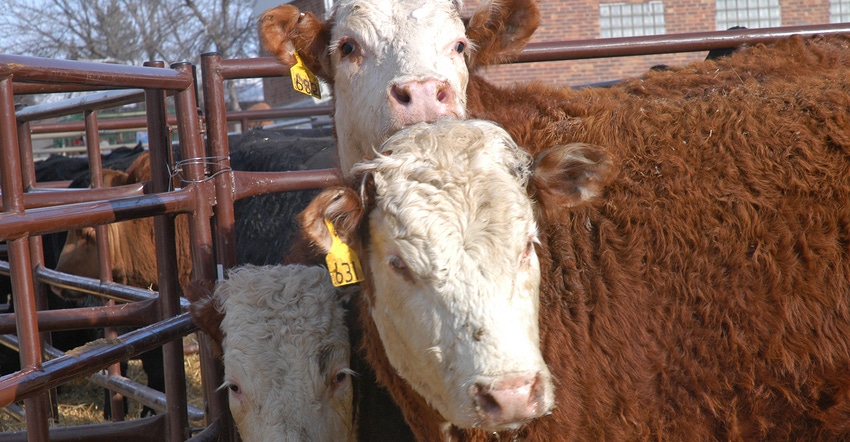April 26, 2017

State and federal animal health officials have identified two additional cases of bovine tuberculosis in South Dakota during follow-up investigations after the disease was initially found in a Harding County beef herd in late February.
Single infected animals were found in two herds located in Harding and Butte counties. Both herds had received the infected cows from the index herd within the past two years.
The three affected herds remain under quarantine while state and federal animal health officials continue to investigate any herds that may have had contact with or purchased animals from the affected herds.
No infected cattle have been found yet in North Dakota.
7 things to know
The following are essential facts to know about bovine TB. The sources for the list are Russ Daly, South Dakota State University Extension veterinarian, and the South Dakota Animal Industry Board.
• Bovine TB is a chronic and slowly progressive disease of cattle.
• Cases of bovine TB are usually diagnosed on the basis of telltale abnormalities found on slaughter inspection. Most often, infected cattle will show little to no outward signs of infection. When clinical signs are present, they will often be vague, such as weight loss, depression and sluggishness. TB in live cattle is identified using the caudal fold test (CFT), where a small dose of tuberculin is injected into the skin around the tail. When infected animals are identified, state and federal officials trace them back to their herd of origin and work to identify other infected herds.
• Transmission of TB between animals occurs when susceptible animals are in close contact with respiratory secretions or aerosols from infected animals. Close contact is necessary for transmission; the infection is not considered to spread easily between cattle separated by any distance. One strain can be transmitted to wildlife, such as deer. As with people and cattle, close contact is necessary for transmission. In Michigan, white-tailed deer are considered to be significant in the persistence of TB in the state. Hunters are encouraged to look for abscesses or other suspicious lesions in deer and report unusual findings to the South Dakota Game, Fish and Parks Department.
• Three bacteria strains are responsible bovine TB:
√ Mycobacterium bovis: affects cattle and many other species, including people and wildlife
√ Mycobacterium avium: affects mostly poultry, but can cross-infect cattle
√ Mycobacterium tuberculosis: affects humans only.
Every year, there are cases of human TB reported in South Dakota, an average of 14 cases per year from 2007-2016.
• Bovine TB may be considered a public health concern, since it can be transmitted to people. However, people would have to be in very close contact with infectious animals for transmission to occur. The general public is protected from bovine TB by the federal and state meat inspection system identifying TB in slaughtered animals. Cooking and pasteurization will kill M. bovis in meat and milk.
• Routine movement of livestock through markets, by private treaty sale and in normal ranch operations should continue as usual. Certificates of veterinary inspection are required for animals moving across state lines, and destination state animal health agencies should be contacted to ensure animal health requirements are met.
• There is no commercially available licensed vaccine against bovine TB in the U.S.
You May Also Like




